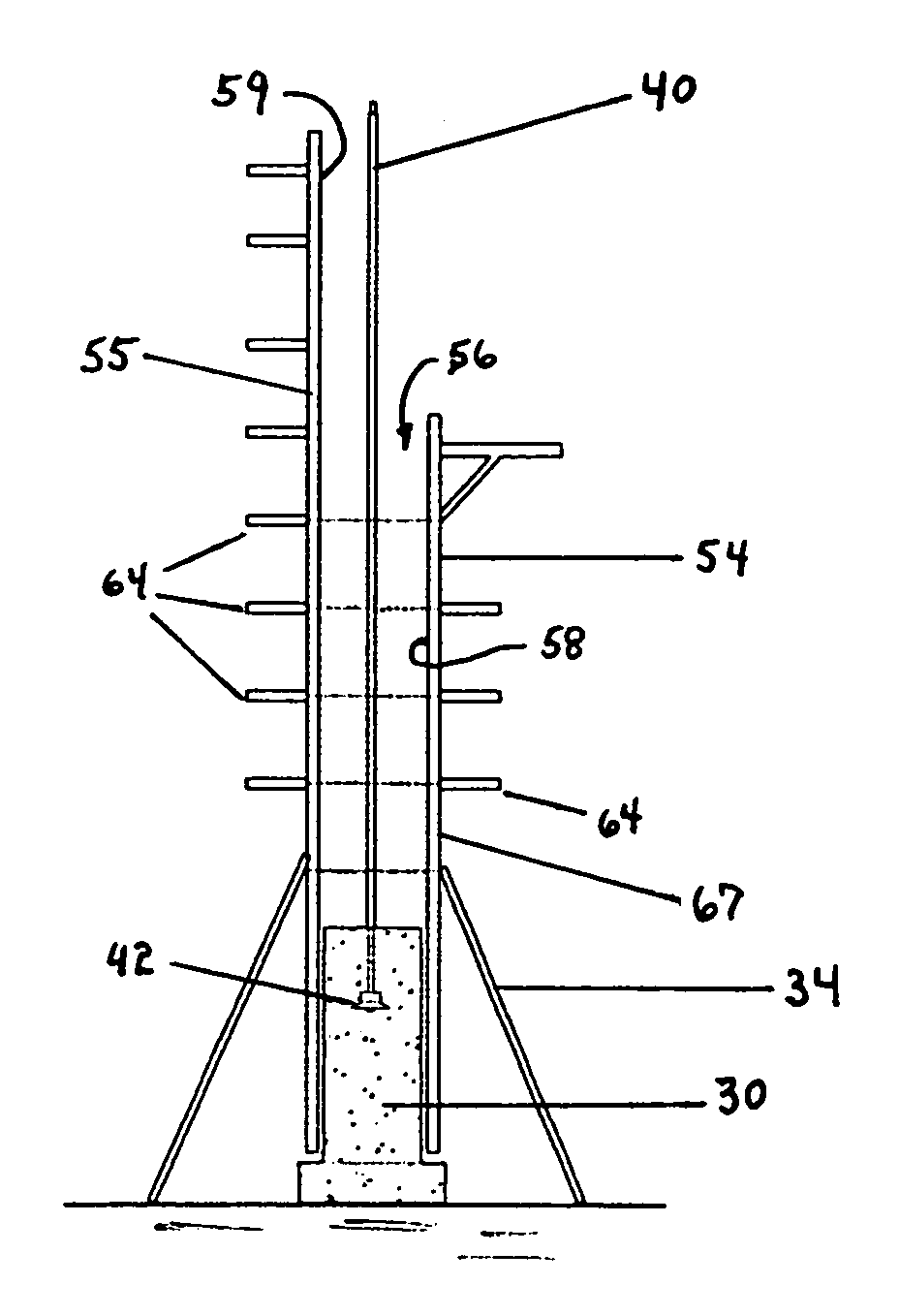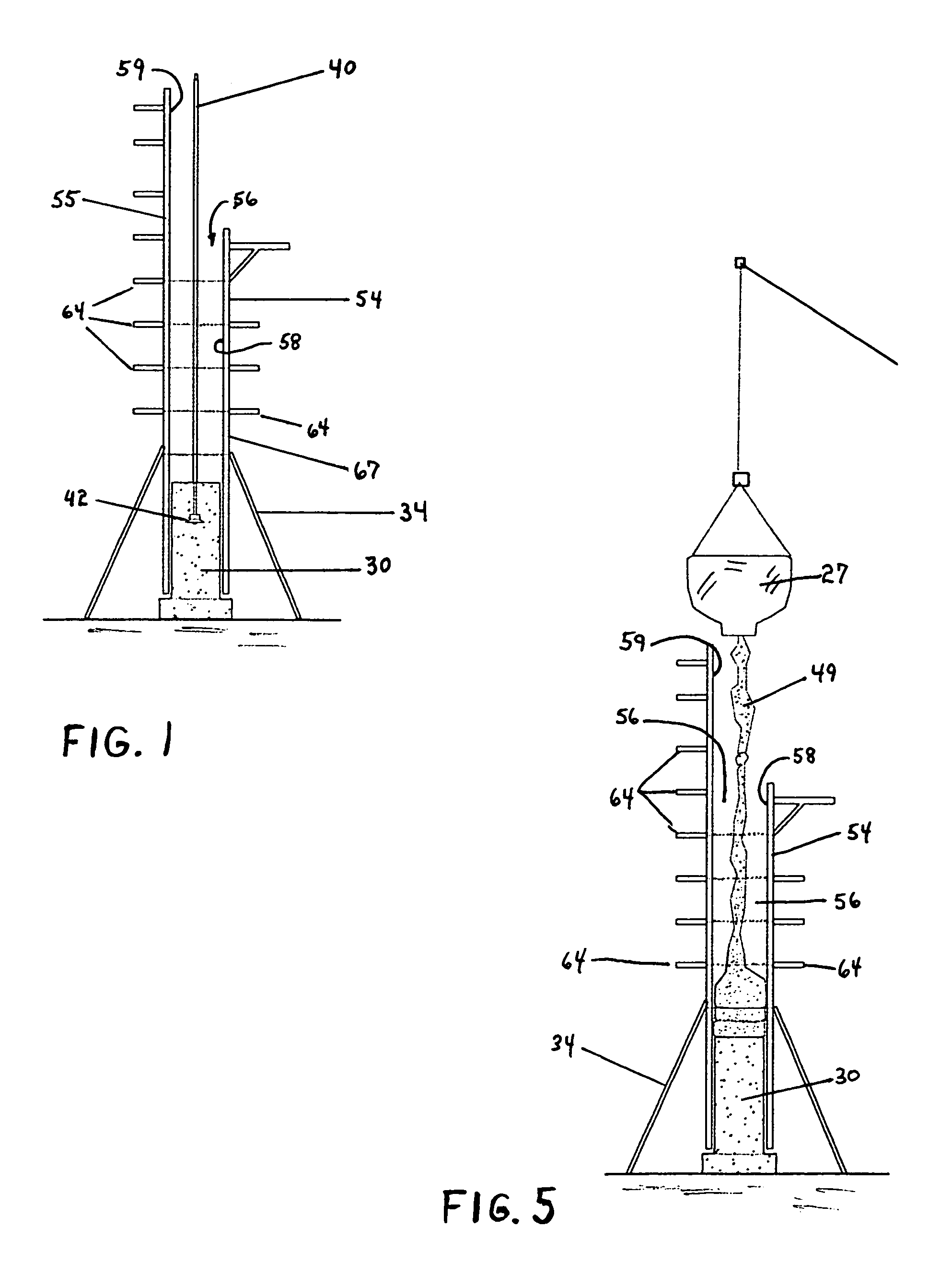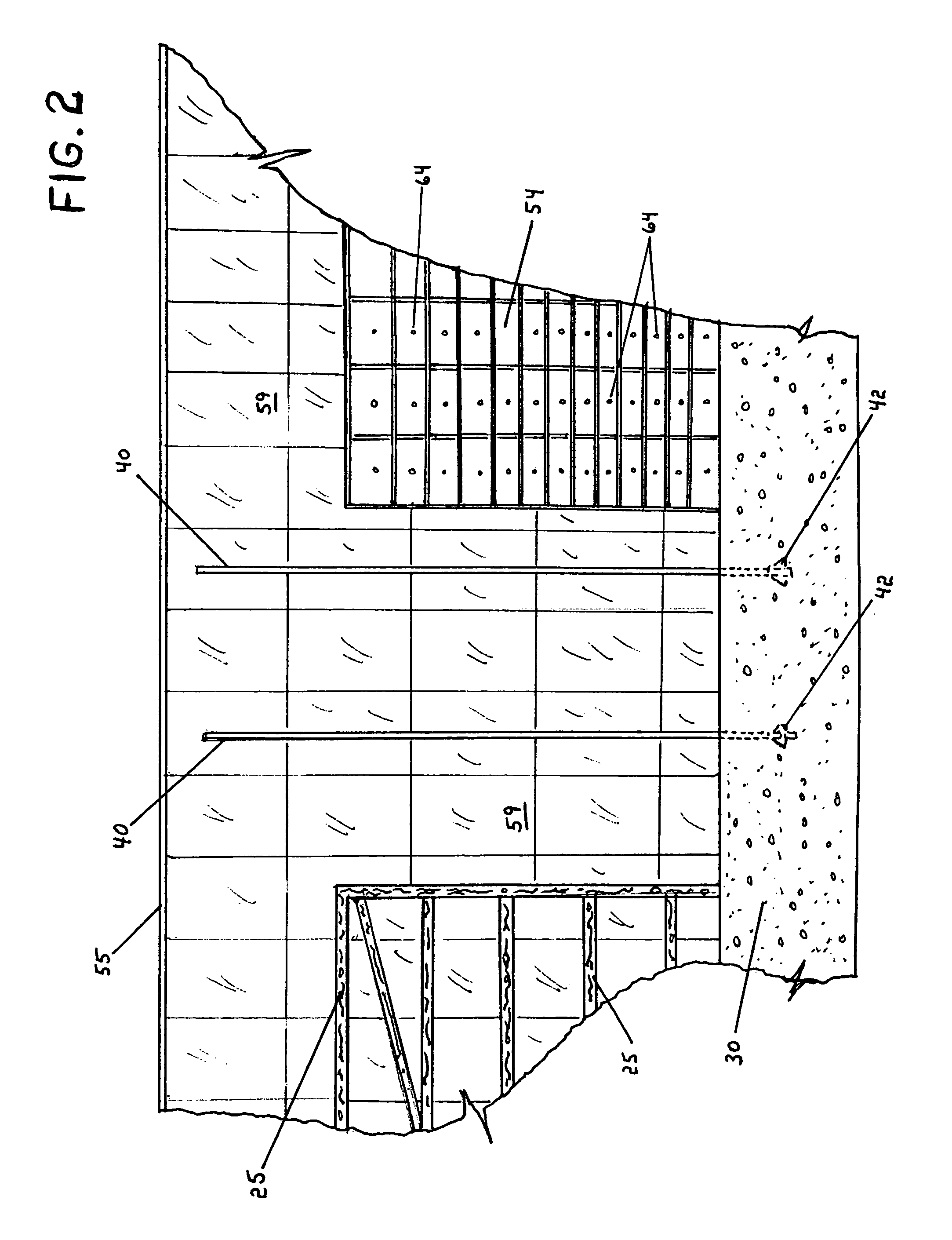Post-tensioned rammed earth construction
a rammed earth and construction method technology, applied in the direction of walls, foundation engineering, building repairs, etc., can solve the problems of high cost of other types of construction materials and methods, rammed earth structures that are vulnerable to certain types of loading, and can be easily damaged, so as to achieve the proper compaction of the cement-soil mixture and the place
- Summary
- Abstract
- Description
- Claims
- Application Information
AI Technical Summary
Benefits of technology
Problems solved by technology
Method used
Image
Examples
Embodiment Construction
)
[0031]Earth has been the most extensively used building material in the world since the commencement of recorded history. It has been used for thousands of years because it met the criteria of comfort and efficiency as well as being readily available nearly anywhere in the world. Probably the most prevalent form of earth construction is adobe, in which moistened earthen mixtures, typically including straw, is pressed into brick molds and allowed to dry. The cured bricks are then stacked in courses, sometimes using mud mortar, and the resulting wall then covered with a mud plaster.
[0032]Rammed earth construction is the modern form of adobe construction. The technique involves compacting a soil-cement mixture into wooden forms. When the forms are removed solid earth walls 18 to 24 inches thick are left standing. The earth used for the construction of the walls is screened, engineered soil, which is mixed with about 8% water and approximately 3% to about 10% Portland cement. This mixt...
PUM
 Login to View More
Login to View More Abstract
Description
Claims
Application Information
 Login to View More
Login to View More - R&D
- Intellectual Property
- Life Sciences
- Materials
- Tech Scout
- Unparalleled Data Quality
- Higher Quality Content
- 60% Fewer Hallucinations
Browse by: Latest US Patents, China's latest patents, Technical Efficacy Thesaurus, Application Domain, Technology Topic, Popular Technical Reports.
© 2025 PatSnap. All rights reserved.Legal|Privacy policy|Modern Slavery Act Transparency Statement|Sitemap|About US| Contact US: help@patsnap.com



